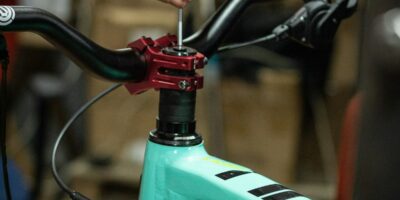Maintaining your bike at home
Bicycles need regular maintenance to ensure they function correctly and last longer. Even if you’re not a professional mechanic, many bike maintenance tasks can be done at home with some basic tools and knowledge.
Essential Tools for Bike Maintenance
A good set of tools is crucial for any maintenance work. Here are some essentials:
- Allen wrenches (metric sizes preferred)
- Screwdrivers (both Phillips and flathead)
- Chain tool
- Bike pump with a pressure gauge
- Tire levers
- Tire patch kit
- Lubricant
- Cleaning rags
- Degreaser
Checking Tire Pressure
Proper tire pressure ensures a smooth ride and prevents flats. Tires have recommended pressure ranges printed on the sidewall. Use a bike pump with a gauge to maintain pressure within this range. Check tire pressure before every ride.
Inspecting and Lubricating the Chain
The chain transfers power from the pedals to the wheels. A dirty or dry chain can cause wear and inefficient riding. Check the chain for dirt and debris. Clean it with a degreaser if necessary. Apply lubricant sparingly and evenly across the entire chain. Wipe off any excess to prevent attracting more dirt.
Brakes Inspection and Adjustment
Brakes are vital for safety. Check the brake pads for wear. Replace them if they are too thin. Ensure the brakes engage with the rims evenly. If they are not aligned properly, use the adjustment screws or barrel adjusters to correct them. Test the brake levers to make sure they offer enough resistance without pulling to the bars.
Tightening Bolts and Screws
Bikes have various bolts and screws that can loosen over time. Regularly check them, especially on the handlebars, stem, seat post, and pedals. Use the correct size of Allen wrench or screwdriver to avoid stripping the bolts.
Cleaning your Bike
Maintaining a clean bike helps it last longer and perform better. Use a bucket of soapy water and a sponge to wash the frame and components. Avoid using high-pressure hoses as they can force water into sensitive areas like the bearings. Rinse with clean water and dry with a soft cloth.
Wheel Truing
Wheels need to be perfectly round and free from wobbles. Use a truing stand if available. Spin the wheel and observe for any side-to-side movement. Tighten or loosen the spokes accordingly to straighten the wheel.
Bottom Bracket and Crankset
The bottom bracket and crankset are crucial for a smooth pedaling experience. Listen for any creaking noises while riding, which could indicate a loose bottom bracket. Use the appropriate tool to tighten it. Check the crankset for any play or movement, ensuring the bolts are securely fastened.
Gears and Derailleurs
Properly functioning gears make your ride more efficient. Inspect the derailleurs for dirt and damage. Clean them if necessary. Shift through all the gears to check if they move smoothly. Adjust the limit screws and cable tension as needed to ensure accurate shifting.
Inspecting Cables and Housing
Cables for brakes and gears can wear out over time. Check for fraying or rust on the cables. The housing should also be intact with no splits. Replace any damaged cables or housing to ensure optimal performance.
Headset Adjustment
The headset connects the fork to the frame and should move smoothly. Lift the front wheel and turn the handlebars side to side. If you feel resistance or hear a grinding noise, the headset may need adjustment. Loosen the stem bolts and adjust the top cap until the movement is smooth, then retighten the bolts.
Saddle and Seat Post
Ensure the saddle is at the correct height and angle. A well-adjusted saddle prevents discomfort and enhances power transfer. Check the seat post for any markings or damage. Grease the seat post to prevent it from seizing in the frame.
Pedals and Cleats
Pedals should spin freely and not have excess play. Check them regularly and tighten if necessary. If you use clipless pedals, inspect the cleats on your cycling shoes for wear. Replace them if they are worn out to maintain a secure connection.
Regular Ride Checks
Before every ride, do a quick check. Ensure the tires are inflated, brakes are working, and there are no strange noises. This habit can prevent small issues from becoming major problems.
Maintaining Suspension Components
If your bike has suspension, it’s crucial to maintain it. Clean the suspension stanchions after every ride. Check for any oil leaks. Follow the manufacturer’s recommended service intervals for changing the oil and seals.
Replacing Worn Parts
Components like tires, brake pads, cables, and chains wear out over time. Keep track of their condition and replace them preemptively rather than waiting for a failure. This practice ensures a safer and more enjoyable ride.
Storing your Bike
How you store your bike can impact its longevity. Keep it in a dry place, away from the elements. If you have to store it outside, use a bike cover to protect it from moisture and UV damage.
Documentation and Records
Maintain a logbook of repairs and maintenance work. Record dates, parts replaced, and any adjustments made. This record helps you stay on top of regular maintenance and anticipate potential issues.
Learning and Improvement
Bike maintenance skills improve with practice. Educate yourself by reading manuals, watching tutorials, and asking experienced cyclists for tips. Every task you perform enhances your confidence and ability to handle more complex repairs.
“`




Subscribe for Updates
Get the latest articles delivered to your inbox.
We respect your privacy. Unsubscribe anytime.